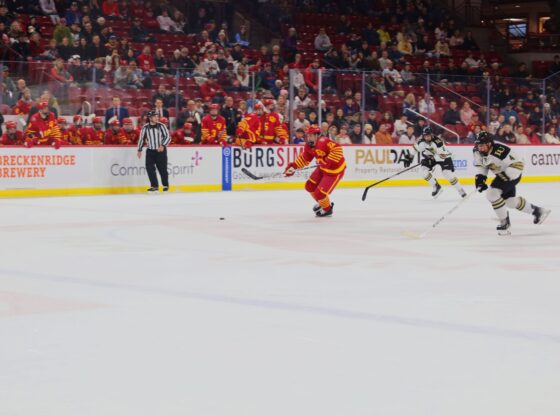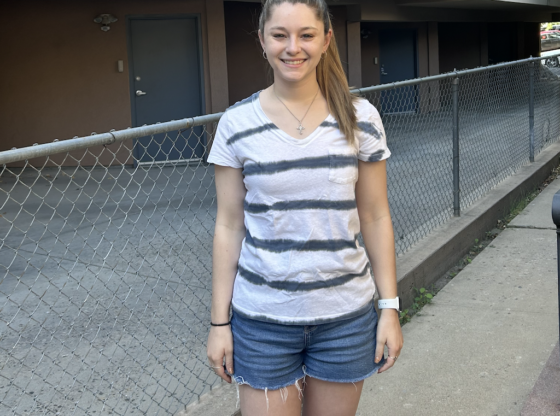The University of Denver was well represented on the ice by student-athlete figure skaters Braden Overett, Justin Gaumond and Lucy Galleher at the 2005 State Farm U.S. Figure Skating Championships in Portland, Ore.
This was Overett’s ninth appearance at the competition and fourth at the senior level.
He earned a trip to the event after winning both the Southwestern Regional in October and the Midwest Sectionals in November.
Skating to pieces from Fiddler on the Roof, Overett finished 15th in the senior men’s short program with a low ordinal of 11 and a total factored placement of 7.5.
Overett’s highest overall finish at the senior level, including both the short program and free skate, occurred in 2004 when he finished seventh.
This was the first appearance for Gaumond and Galleher at the State Farm U.S. Championships.
A second-place finish at the Midwest Sectionals after having a bye at the Southwestern Regional secured a spot for the pair at the event.
In junior pairs, Gaumond and Galleher placed tenth in both the short program and the free skate portions of the competition.
The pair skated to a selection from Cirque du Soleil in the free skate and Yanni in the short program.
“We were really excited to make it after such a short time together, but at the same time, we wanted to stay focused and treat this like any other competition,” said Galleher.
Galleher added, “We have not changed anything in our programs, we have just been working on perfecting the moves that we already have.”
The duo earned one 11th place ordinal, seven 10th place ordinals and one eighth-place ordinal in the free skate.
In the short program they finished with one 12th place ordinal, three 11th place ordinals, four 10th place ordinals and one eighth-place ordinal.
All U.S. events are scored on a 6.0 scoring system, with zero reflecting that the competitor did not skate and a six signifying a perfect score.
Skaters receive a technical and a performance score from each judge.
The technical mark is based upon the quality of the jump, footwork and the use of the ice.
Jump qualities are distinguished by a skater’s speed, position in the air, take-off, and the height and distance traveled.
The performance score is a reflection of speed variation, use of ice surface, easy movement, carriage and style, originality, choice of music and conformity with the music.
The technical and performance scores are added together and the skater receives a placement, also known as an ordinal, from each judge.
The skater that earns the highest score from each judge earns first place for that judge’s section.
Whoever has the greater part of the first place finishes from the judges is deemed victor of that event.
The results from each event are then multiplied by a weighting factor, with 0.5 used in the short program and 1.0 used for the free skate.
These totals are then added together to give the final results of the competition, also known as the total factored placement.
With a total factored placement of 15, Gaumond and Galleher put together a strong performance although they have not worked with each other for a long period of time.
“Getting used to each other’s timing and technique was a little challenging, but we seem to be adjusting well,” said Galleher.
“Since we both have similar styles of skating, and similar attitudes and work ethics, it has been easier to adjust,” she said.
Gaumond, also president of club figure skating at DU, has been skating since age 9 and had worked with his sister, Stephanie, for eight years before pairing up with Galleher.
“She had a stress fracture in her back. I would like to be still working with her but not if she was not happy,” said Gaumond.
“She was not happy so she made the correct decision for her and that makes me happy,” he said.
Competition can be stressful because of missed classes and the amount of schoolwork that can pile up due to events on the road.
“We missed finals week last quarter, we just miss weeks at a time” said Gaumond.
In addition, the skaters spend a significant amount of time practicing each week, which takes tolls on their bodies from time to time.
Gaumond added, “There is contact in this sport and plenty of it. My body and the ice [colliding] when I fall learning new moves and remember we are not wearing pads.”
With years of skating under their belts, it is safe to say that Overett, Gaumond and Galleher possess an ample supply of mental and physical toughness, focus and drive to continue doing what they love for as long as they desire.











